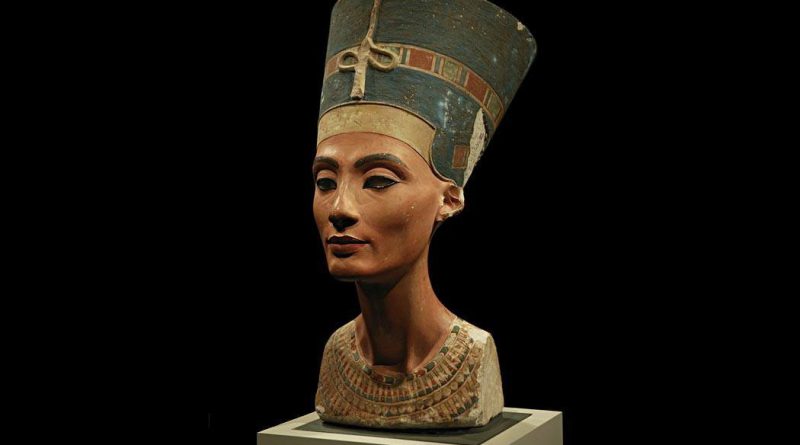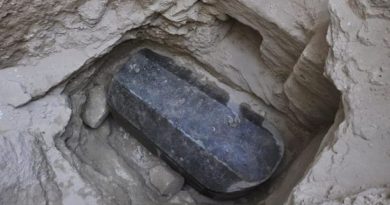Queen Nefertiti bust may have had a facelift
An ancient Egyptian queen who was been hailed for thousands of years as the perfect example of beauty may not have been such a looker after all, researchers have claimed. The 3,300-year-old carved bust of Queen Nerfititi with her aquiline nose and high cheek bones has won her admiring fans around the world.
But a delicately carved face in the limestone core of the famous bust suggests the royal sculptor at the time may have smoothed creases around the mouth and fixed a bumpy nose to depict the ‘Beauty of the Nile’ in a better light.
TV Historian Bettany Hughes was part of a team that made the discovery which is supported by earlier research from German scientists who studied the 20 inch bust of Nefretiti whose name means ‘the beautiful one has come’.
Ms Hughes and her team carried out a CT scan of the bust and discovered a second limestone model with a bent nose and wrinkles around the eyes which may have been used as a template for the bust.
‘That statue is still very beautiful nut not as beautiful. It showed her nose was bent, and that she had wrinkles around her eyes. It’s a real portrait of a real woman,’ Ms Hughes told The Independent Woodstock Literary Festival on Saturday.
‘We’re now going to a tomb in the Valley of the Kings where we think Nefertiti’s sister is to see if the dynasty has the same features. ‘All of life is in classical antiquity and articulated in the most beautiful, evocative and sensual way. We are denuding society if we don’t allow young people to revel in that beautiful world.’
The bust of Nefertiti, who died around 1330 BC aged between 29 and 38, is one of the most widely recognised Ancient Egyptian items after the mask of the king Tutenkhamen who may have been her son.
It was found in Egypt in 1912 at Tell el-Amarna, the short-lived capital of Nefertiti’s husband, the Pharaoh Akhenaten. It is now housed in Berlin’s Altes Museum. Ever since its first public exhibition in 1923, the precision of the 3,300-year-old sculpture’s symmetrical lines and its finely wrought features have drawn thousands of admirers from around the globe.
But the first suggestion that she may have had the ancient equivalent of botox and a nose job came in March last year when German scientists analysed the limestone carving with CT scans.
Their analysis showed that compared to the outer stucco face, the inner face had less prominent cheekbones, a slight bump on the ridge of the nose, creases around the corner of mouth and cheeks, and less depth at the corners of the eyelids.
The changes were possibly made to make the queen adhere more to the ideals of beauty of the time, the researchers said.
‘It is possible that the bust of Nefertiti was commissioned (probably by Akhenaten himself) to represent Nefertiti according to his personal perception,’ Alexander Huppertz, director of the Imaging Science Institute in Berlin, and colleagues reported in the journal Radiology.
‘Different fissures parallel to the surface were found in the shoulders, the lower surfaces of the bust, and the rear of the crown,’
Nefertiti is not the only ancient beauty whose reputation has been questioned.
Cleopatra, whose beauty was legendary, was portrayed unflatteringly in 2001. A statue of Cleopatra exhibited at the British Museum portrayed her as plain, no more than 5ft tall and rather plump.
Others believe that rather being, as Shakespeare described her looks as having ‘infinite variety’, she was short and frumpy with bad teeth.
Egyptian officials have named the Nefertiti bust and the Rosetta Stone at the British Museum in London among five precious artefacts held abroad which they want to bring home, with mediation from the U.N. cultural agency UNESCO.
Read more: http://www.dailymail.co.uk/sciencetech/article-1313409/The-ancient-Egyptian-facelift-Beautiful-Queen-Nefertiti-bent-nose-wrinkled-eyes.html#ixzz1059g2Uyw



